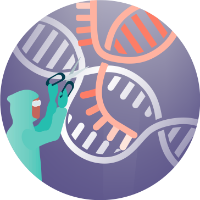Polymer nanoparticles: potential for efficient, biodegradable, and cost-effective delivery of gene therapy to multiple tissues
Cell & Gene Therapy Insights 2020; 6(4), 583–590
10.18609/cgti.2020.068
The field of gene therapy has had a resurgence of interest and activity in the last few years due to recent approvals and development of new gene editing technologies. Recent approvals include Luxturna®, which uses adeno-associated virus (AAV) to deliver DNA to treat inherited retinal disease and Onpattro®, which uses a lipid nanoparticle (LNP) to deliver RNA interference (RNAi) to treat hereditary transthyretin-mediated amyloidosis. New technologies that are starting to reach human testing include CRISPR-Cas9, CRISPR-Cas12a and various base editors, but the bottleneck is delivery. AAV is the most widely used viral platform for in vivo delivery, but it has significant limitations, including delivery of only nucleic acids, small payload capacity, potential for integration, pre-existing and acquired immunogenicity, and cost of manufacturing. LNPs are also limited to nucleic acid payloads and have not shown efficient in vivo delivery outside of liver and muscle. A new polymer-based nanoparticle system is being developed that has the potential to overcome these limitations and enable the next generation of gene therapy.
